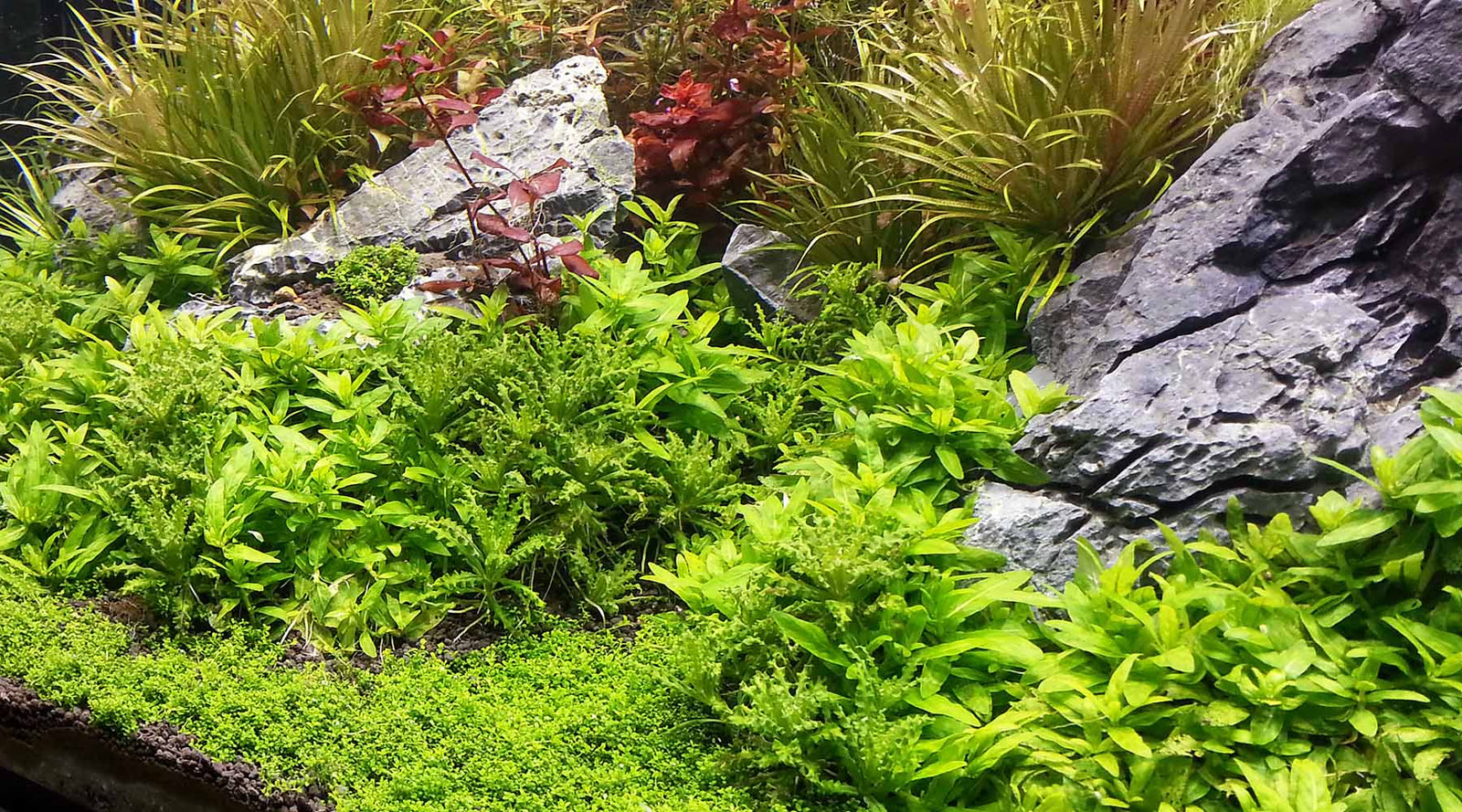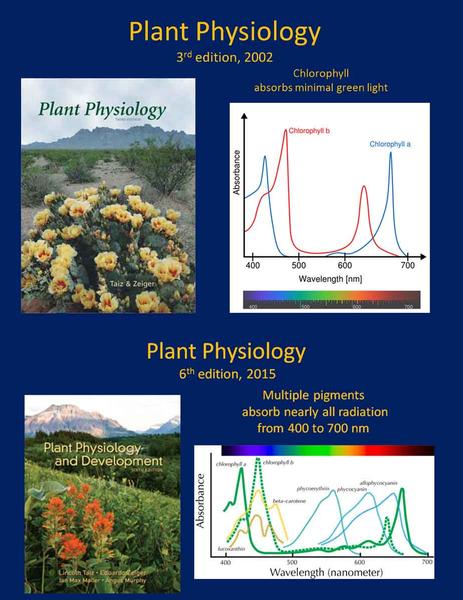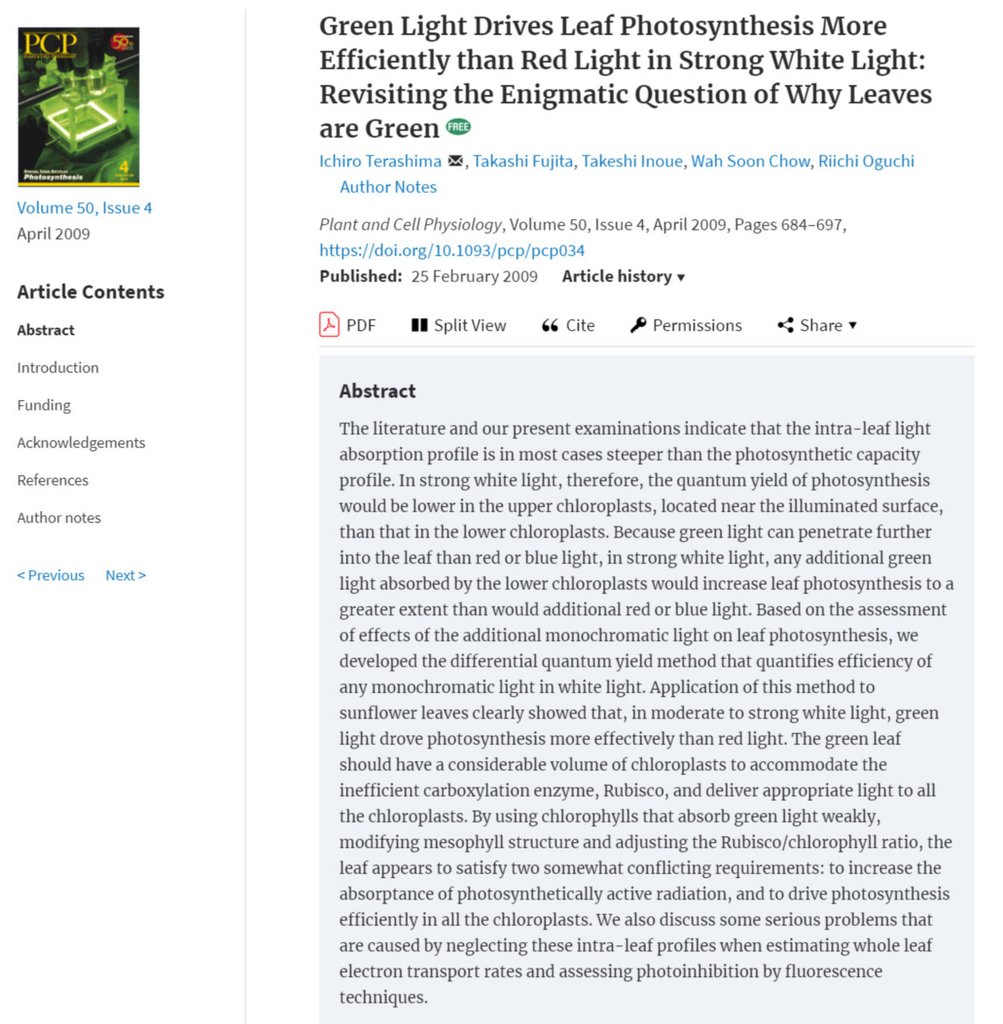
Don’t green plants reflect green light?
There is a widespread belief that plants do not use green light for photosynthesis.
This error is a result of data misinterpretation from chlorophyll absorption spectrum charts. Many common textbooks also make the same error though some have corrected it in their updated versions. (See picture below). It was once thought that chlorophyll only absorbs red/blue light while reflecting green light and thus plants do not use green light for photosynthesis. Such older spectrum charts were constructed by shining light through extracted chlorophyll pigments in laboratory petri dishes and observing what light spectrum passed through un-absorbed. However, such laboratory conditions did not replicate the process of photosynthesis in living leaves accurately.
Now it is known that leaves contain other pigments that utilize green light for photosynthesis, and depending on the 3d orientation and structure of chlorophyll and other pigments – a much wider spectrum of light is absorbed by leaves than previously thought.
All visible light is used for photosynthesis in a living leaf. Red and blue spectrum are more efficient at stimulating photosynthesis. However, as red/blue light saturation increases, the efficiency of green light at stimulating photosynthesis eventually over takes red/blue light. This means that the efficiency of light spectrum on photosynthesis is not linear. This is elaborated in more laborious papers such as the one below:
The insightful scientific paper that studies the role of green light in plant photosynthesis is “Green Light Drives Leaf Photosynthesis More Efficiently than Red Light in Strong White Light: Revisiting the Enigmatic Question of Why Leaves are Green” published by the University of Tokyo. (Excerpt below)
Read more in-depth on the full paper here.

